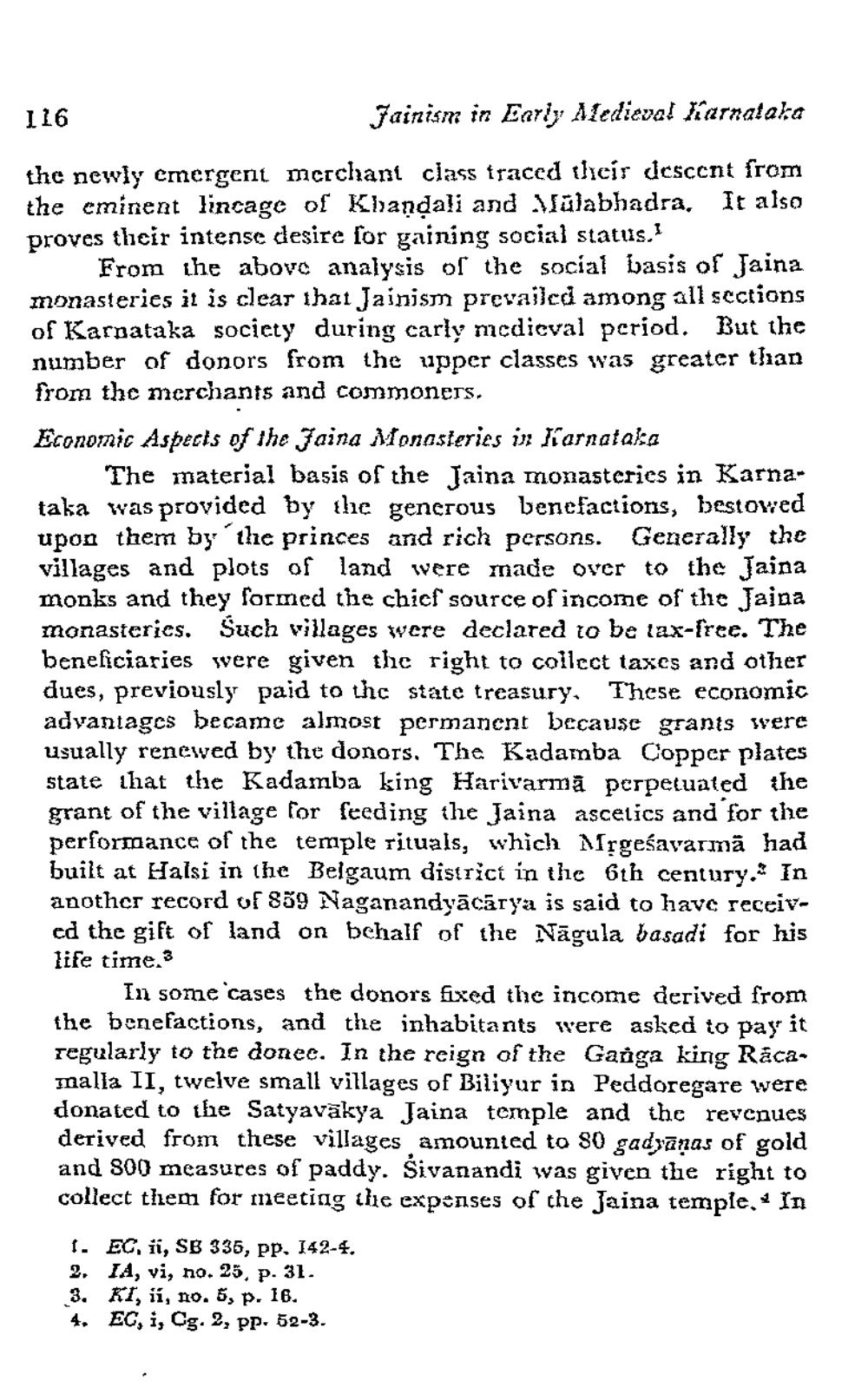________________
116
Jainism in Early Medieval Karnataka
the newly emergent merchant class traced their descent from the eminent lincage of Khandali and Malabhadra. It also proves their intense desire for gaining social status.
From the above analysis of the social basis of Jaina monasteries it is clear that Jainism prevailed among all sections of Karnataka society during carly mcdicval period. But the number of donors from the upper classes was greater than from the merchants and commoners. Economic Aspects of the Faina Monasteries in liarnataka
The material basis of the Jaina monasteries in Karnataka was provided by the generous benefactions, bestowed upon them by the princes and rich persons. Generally the villages and plots of land were made over to the Jaina monks and they formed the chief source of income of the Jaina monasteries. Such villages were declared ro be lax-free. The beneficiaries were given the right to collect taxes and other dues, previously paid to the state treasury. These economic advantages became almost permanent because grants were usually renewed by the donors. The Kadamba Copper plates state that the Kadamba king Harivarmā perpetuated the grant of the village for feeding the Jaina ascetics and for the performance of the temple Tituals, which Mrgeśavarma had built at Halsi in the Belgaum district in the 6th century. In another record of 859 Naganandyācārya is said to have received the gift of land on behalf of the Nāgula basadi for his life time.3
In some cases the donors fixed the income derived from the benefactions, and the inhabitants were asked to pay it regularly to the donee. In the reign of the Ganga king Rácaqnalla II, twelve small villages of Biliyur in Peddoregare were donated to the Satyavākya Jaina temple and the revenues derived from these villages amounted to 80 gadyanas of gold and 800 measures of paddy. Sivanandi was given the right to collect them for meeting the expenses of the Jaina temple. In 1. EC, ii, SB 335, pp. 142-4,
IA, vi, no. 25, p. 31. 3. KI, ií, no. 5, p. 16. 4. EC, i, Cg. 2, pp. 52-3.




